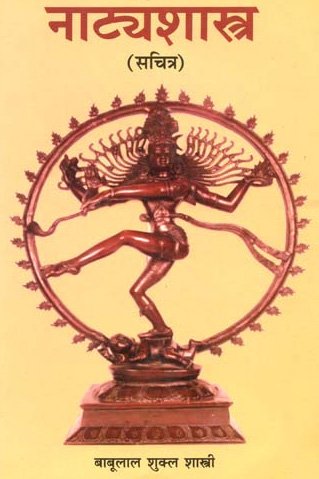Upaveshana, Upaveśana: 12 definitions
Introduction:
Upaveshana means something in Hinduism, Sanskrit. If you want to know the exact meaning, history, etymology or English translation of this term then check out the descriptions on this page. Add your comment or reference to a book if you want to contribute to this summary article.
The Sanskrit term Upaveśana can be transliterated into English as Upavesana or Upaveshana, using the IAST transliteration scheme (?).
In Hinduism
Purana and Itihasa (epic history)
Source: archive.org: Shiva Purana - English TranslationUpaveśana (उपवेशन, “seating”) is mentioned in the Śivapurāṇa 1.20 while explaining the mode of worshipping an earthen phallic image (pārthiva-liṅga) according to the Vedic rites:—“[...] the invocation (āvāhana) shall be performed with the mantra “Mā no mahāntam” etc. The seating (upaveśana) shall be performed with the mantra “Yā te rudreṇa”.

The Purana (पुराण, purāṇas) refers to Sanskrit literature preserving ancient India’s vast cultural history, including historical legends, religious ceremonies, various arts and sciences. The eighteen mahapuranas total over 400,000 shlokas (metrical couplets) and date to at least several centuries BCE.
Natyashastra (theatrics and dramaturgy)
Source: Shodhganga: Elements of Art and Architecture in the Trtiyakhanda of the Visnudharmottarapurana (natya)Upaveśana (उपवेशन) refers to “sitting postures” (in Sanskrit Dramas), as conveyed through Āṅgikābhinaya: one of the four divisions of Abhinaya or “ways to convey or represent one’s emotion to others”, according to the Nāṭyaśāstra and the Viṣṇudharmottarapurāṇa, an ancient Sanskrit text which (being encyclopedic in nature) deals with a variety of cultural topics such as arts, architecture, music, grammar and astronomy.—The āṅgikābhinaya includes the histrionic representation of the limbs which is simply known as physical gestures.
In the Viṣṇudharmottarapurāṇa, nine kinds of upaveśana i.e., sitting postures are accepted for Drama.
- svastha,
- mandālasa,
- klānta,
- svasthālasa,
- viṣkumbhita,
- kaṭuka,
- muktajānu,
- jānūgata and
- vimukta.

Natyashastra (नाट्यशास्त्र, nāṭyaśāstra) refers to both the ancient Indian tradition (shastra) of performing arts, (natya—theatrics, drama, dance, music), as well as the name of a Sanskrit work dealing with these subjects. It also teaches the rules for composing Dramatic plays (nataka), construction and performance of Theater, and Poetic works (kavya).
Languages of India and abroad
Sanskrit dictionary
Source: DDSA: The practical Sanskrit-English dictionaryUpaveśana (उपवेशन).—
1) Sitting, sitting down; as in प्रायोपवेशन (prāyopaveśana).
2) Directing one's mind to, being attached to.
3) Voiding by stool.
4) Placing down.
5) Surrendering; सागरस्योपवेशनम् (sāgarasyopaveśanam) Rām.6.19.33.
Derivable forms: upaveśanam (उपवेशनम्).
See also (synonyms): upaveśa.
Source: Cologne Digital Sanskrit Dictionaries: Shabda-Sagara Sanskrit-English DictionaryUpaveśana (उपवेशन).—n.
(-naṃ) 1. Sitting, resting. 2. Voiding by stool. E. upa before viś to enter, active or causal form, lyuṭ aff.
Source: Cologne Digital Sanskrit Dictionaries: Benfey Sanskrit-English DictionaryUpaveśana (उपवेशन).—i. e. upa-viś + ana, n. Undergoing, [Pañcatantra] 50, 15.
Source: Cologne Digital Sanskrit Dictionaries: Cappeller Sanskrit-English DictionaryUpaveśana (उपवेशन).—[neuter] sitting down; devoting one’s self to (—°).
Source: Cologne Digital Sanskrit Dictionaries: Monier-Williams Sanskrit-English Dictionary1) Upaveśana (उपवेशन):—[=upa-veśana] [from upa-viś] n. the act of sitting down, [Āśvalāyana-śrauta-sūtra; Kauśika-sūtra]
2) [v.s. ...] a seat, [Raghuvaṃśa]
3) [v.s. ...] the being devoted to or engaged in [Mahābhārata; Pañcatantra]
4) [v.s. ...] evacuation or motion of the bowels, [Caraka]
5) [v.s. ...] causing to sit down, [cf. Lexicographers, esp. such as amarasiṃha, halāyudha, hemacandra, etc.]
Source: Cologne Digital Sanskrit Dictionaries: Yates Sanskrit-English DictionaryUpaveśana (उपवेशन):—[upa-veśana] (naṃ) 1. n. Idem.
Source: DDSA: Paia-sadda-mahannavo; a comprehensive Prakrit Hindi dictionary (S)Upaveśana (उपवेशन) in the Sanskrit language is related to the Prakrit word: Uvavisaṇa.
[Sanskrit to German]
Sanskrit, also spelled संस्कृतम् (saṃskṛtam), is an ancient language of India commonly seen as the grandmother of the Indo-European language family (even English!). Closely allied with Prakrit and Pali, Sanskrit is more exhaustive in both grammar and terms and has the most extensive collection of literature in the world, greatly surpassing its sister-languages Greek and Latin.
Kannada-English dictionary
Source: Alar: Kannada-English corpusUpavēśana (ಉಪವೇಶನ):—[noun] = ಉಪವೇಶ [upavesha].
Kannada is a Dravidian language (as opposed to the Indo-European language family) mainly spoken in the southwestern region of India.
See also (Relevant definitions)
Starts with: Upaveshanamamdira, Upaveshanaprayoga.
Ends with: Paryupaveshana, Pratyupaveshana, Prayopaveshana, Samupaveshana.
Full-text (+5): Upavesha, Paryupaveshana, Prayopaveshana, Pratyupaveshana, Upavishta, Uvavisana, Katuka, Svasthalasa, Vishkumbhita, Janugata, Vimukta, Upaveshin, Samupaveshana, Muktajanuka, Sitting posture, Klanta, Svastha, Mandalasa, Akuncitaka, Avahana.
Relevant text
Search found 3 books and stories containing Upaveshana, Upa-veśana, Upa-vesana, Upa-veshana, Upaveśana, Upavesana, Upavēśana; (plurals include: Upaveshanas, veśanas, vesanas, veshanas, Upaveśanas, Upavesanas, Upavēśanas). You can also click to the full overview containing English textual excerpts. Below are direct links for the most relevant articles:
Vishnudharmottara Purana (Art and Architecture) (by Bhagyashree Sarma)
1.3. Elements of Drama (d): Dramatic Postures < [Chapter 3 - Drama and Dance]
The Shiva Purana (by J. L. Shastri)
Chapter 20 - Worshipping an earthen phallic image by chanting Vedic mantras < [Section 1 - Vidyeśvara-saṃhitā]
Manasara (English translation) (by Prasanna Kumar Acharya)